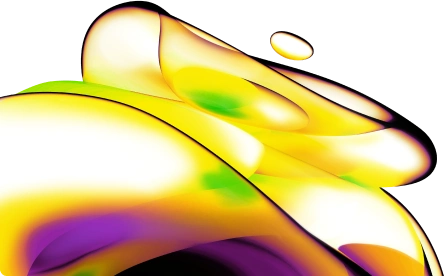

AlphaLISA CHO HCP Detection Kit, 100 Assay Points
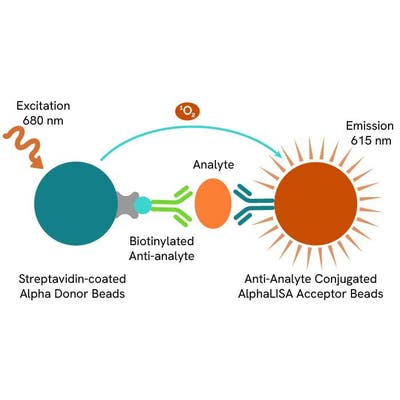

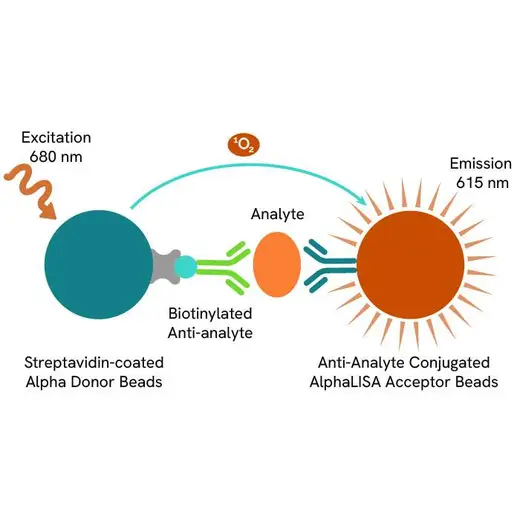


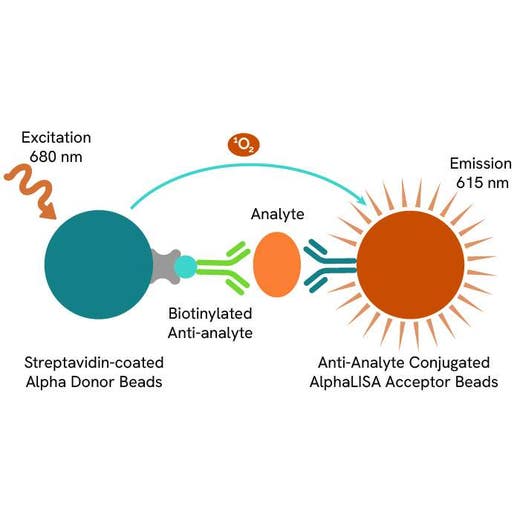


| Feature | Specification |
|---|---|
| Application | タンパク質定量 |
| Dynamic Range | 0.52 - 3,000 ng/mL |
| Limit of Detection | 0.52 ng/mL |
| Limit of Quantification | 1.80 ng/mL |
| Sample Volume | 5 µL |









Product information
Overview
CHO cells are widely used expression hosts for recombinant proteins and are utilized for the generation of monoclonal antibodies. The CHO Host Cell Proteins (HCP) kit is designed to measure contaminants originating from the CHO cells used to manufacture therapeutic antibodies. This kit can be utilized to quantify CHO HCP proteins at various stages, from routine bioprocess operations to crude harvest materials to final products. Our simple procedure and robust assay offer increased throughput compared to ELISA.
Formats:
- Our 100 assay point kit allows you to run 100 wells in 96-well format, using a 50 µL reaction volume (5 µL of sample).
- Our 500 assay point kit allows you to run 500 wells in 96-well or 384-well format, using a 50 µL reaction volume (5 µL of sample).
- Our 5,000 assay point kit allows you to run 5,000 wells in 96-well or 384-well format, using a 50 µL reaction volume (5 µL of sample).
Features:
- No-wash steps, no separation steps
- ELISA alternative technology
- Sensitive detection
- Broad sample compatibility
- Small sample volume
- Results in less than 3 hours
- Half the time of an ELISA assay
AlphaLISA technology allows the detection of molecules of interest in a no-wash, highly sensitive, quantitative assay. In an AlphaLISA assay, a biotinylated anti-analyte antibody binds to the Streptavidin-coated Donor beads while another anti-analyte antibody is conjugated to AlphaLISA Acceptor beads. In the presence of the analyte, the beads come into close proximity. The excitation of the Donor beads causes the release of singlet oxygen molecules that triggers a cascade of energy transfer in the Acceptor beads, resulting in a sharp peak of light emission at 615 nm.
How it works
Principle of the AlphaLISA assay
The AlphaLISA assay is based on an AlphaLISA sandwich immunoassay involving a biotinylated anti-analyte antibody bound to Streptavidin-coated AlphaLISA Donor beads and an anti-analyte antibody conjugated to AlphaLISA Acceptor beads. Both antibodies are directed against the analyte of interest. In the presence of the target, both antibodies bind to analyte and the beads come into proximity. The excitation of the Donor beads provokes the release of singlet oxygen molecules that triggers a cascade of energy transfer within the Acceptor beads, resulting in emission with λmax at 615 nm. The intensity of the signal is directly proportional to the concentration of analyte present in the sample.

Protocol of the AlphaLISA assay
The AlphaLISA assay can be run in a 96- or 384-well detection plate (50 µL final). As described here, samples or standards are dispensed directly into the assay plate for the detection of the analyte of interest by AlphaLISA reagents. No washing steps are needed. The protocol can be further miniaturized or upscaled by simply resizing each addition volume proportionally.
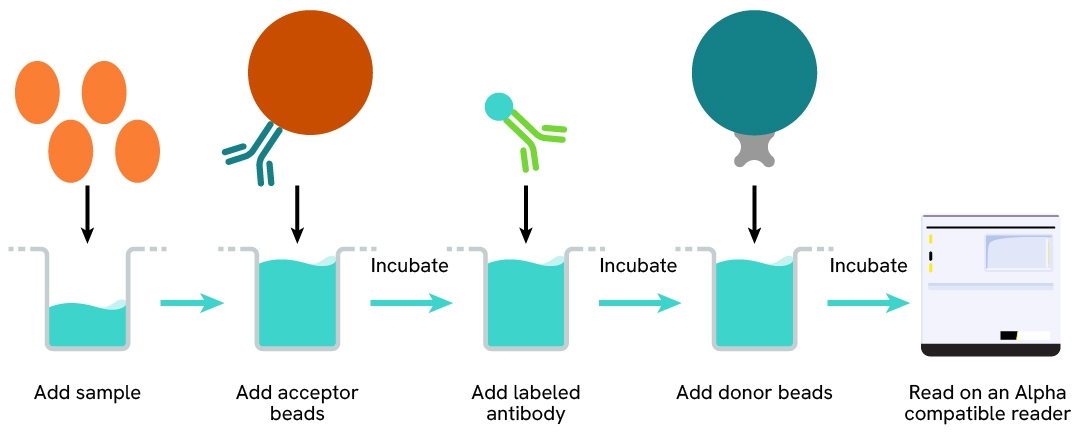
Specifications
| Application |
Protein Quantification
|
|---|---|
| Automation Compatible |
Yes
|
| Brand |
AlphaLISA
|
| Detection Modality |
Alpha
|
| Dynamic Range |
0.52 - 3,000 ng/mL
|
| Limit of Detection |
0.52 ng/mL
|
| Limit of Quantification |
1.80 ng/mL
|
| Product Group |
Kit
|
| Sample Volume |
5 µL
|
| Shipping Conditions |
Shipped in Blue Ice
|
| Target |
HCP
|
| Target Class |
Biologics
|
| Technology |
Alpha
|
| Unit Size |
100 assay points
|
Video gallery
Resources
Are you looking for resources, click on the resource type to explore further.
During the production process of recombinant proteins, the host organisms - most of the time Chinese Hamster Ovary cells (CHO) -...
Detecting and quantifying HCPs with automatable homogeneous immunoassays
During biotherapeutic manufacturing and production, the...
With over 200 different types of cancer, management relies on a variety of techniques such as chemotherapy, radiotherapy, and...
Unlock the future of therapeutics with multispecific antibodies
Discover the groundbreaking advancements in multispecific antibody...
Helping you put safety and product efficacy at the forefront of your GMP manufacturing
At Revvity we’re able to support your GMP...


How can we help you?
We are here to answer your questions.
